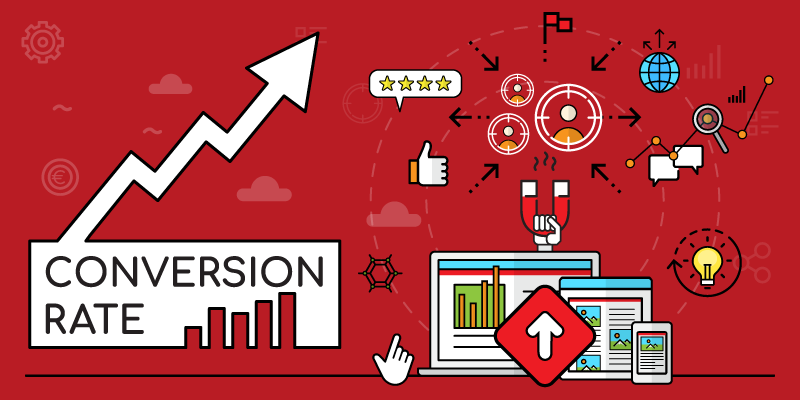Conversion rate optimization is quickly becoming one of the most popular marketing tactics for 2021.
Why? Because it is one of the few marketing strategies that can increase your sales without spending more on advertising and content marketing.
What is Conversion Rate Optimization?
The conversion rate is the percentage of people who visit your site and take the action you want (fill out a form, download an e-book, make a purchase). Conversion rate optimization is simply the process of increasing that percentage by improving the design or UX of your website.
The average conversion rate, across all industries, is 2.35%, but the top 25% converts to 5.31% or more.
Today, you will learn the top 15 tactics that will improve your conversion rates and place your site in the top 25th percentile.
Make Sure Your Ads Match Your Landing Page
You must maintain strict relevance between your ads and your landing page. This means that what you offer in your ads must be exactly what you offer on your landing page.
For example, if you run an ad promoting a sale at a 25% discount, the exact sale in that exact language must also be on the landing page you are sending leads to.
You also want to make sure you keep the same brand. When I say “brand,” I mean not only your tone of voice and style, but also the colors, fonts, and designs you use.
Clarify Your Product’s Value Proposition
A value proposition is the number one reason customers should buy from you.
What is a value proposition? First impressions are everything, and a value proposition immediately tells potential customers that you have exactly what they need. It’s essentially your promise to deliver great value to them through clear resources and solution-oriented benefits.
This is something that you should make very clear on your website and you should have a sense of urgency so that your customers feel compelled to buy your product or service.
In this Acadium example, potential clients (in this case, job applicants) know exactly what to sign up for:
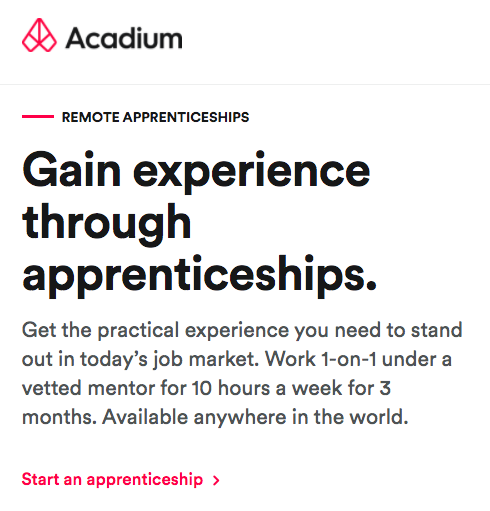
To make sure your value proposition works, identify the benefits your customers will receive (i.e. how your product/service will improve their lives), what problem you want to solve, and how customers will differentiate you from your competitors.
Here is the business value proposition for the same company:

It clearly states what a company would earn from working with Acadium: zero hiring fees, candidates trained and screened, and pre-hiring testing.
The design itself is also very clear, with a large, bold title that uses the word “benefits” and other descriptions below.
Since most people don’t actually read all of your content, it’s important that it can be clearly understood just by browsing.
Use Content that Suits Your Specific Audience
This means that the level of reading and comprehension of your content must match the target audience.
Be aware of the language or tone you are using. Your content may appear coherent and rich, but if you’re not converting, your wording can be overwhelming and superfluous to your target audience.
Below is an example of the language used for a copywriting course. It is not only aimed at beginners but also targets younger audiences (also indicated by the simple design):
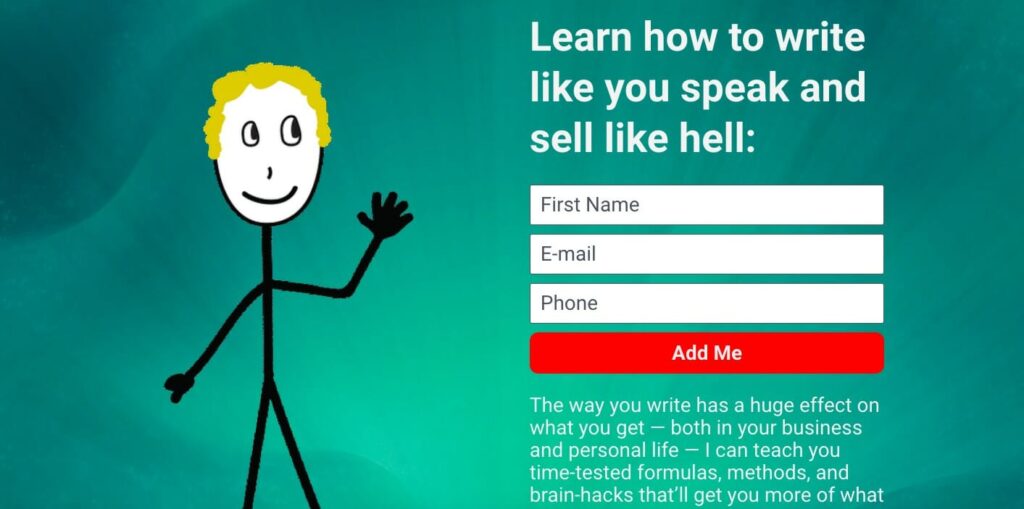
However, this same copy (and image) would be inappropriate if you were a personal injury attorney. People who visit a legal site like the one below are likely to feel cheated and very dissatisfied, so the tone here is appropriate for that specific audience:
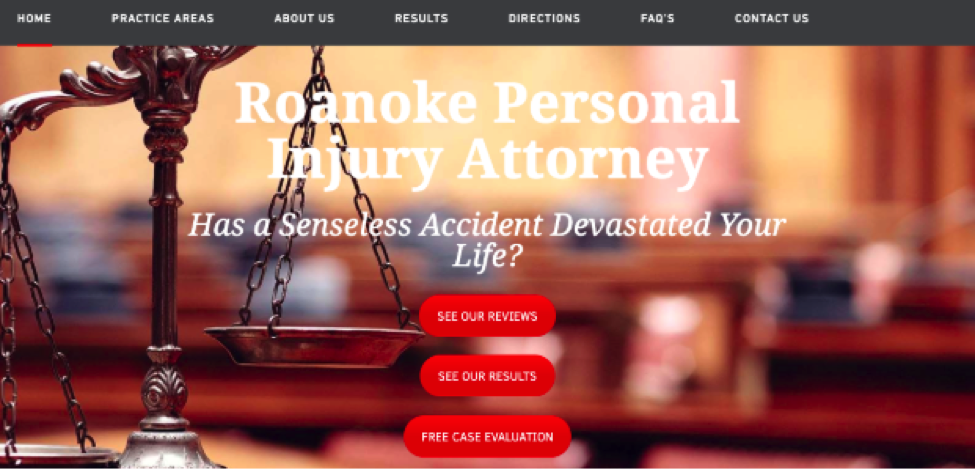
Remember that the tone of your voice or the way you speak/write is not the only important element. The words and phrases you use are important too.
For example, if you are talking to doctors, call your “clients” as patients, not as clients:
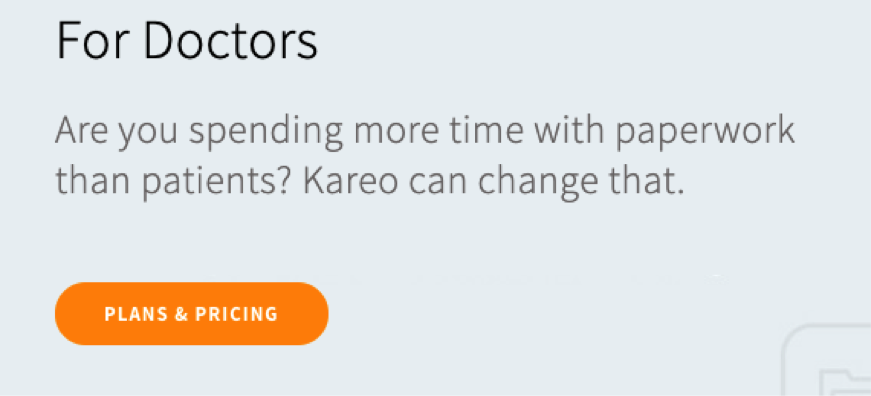
If you work in the health insurance industry, brokers prefer to be called “advisers” or “consultants.” So make sure you understand the language and tone of your audience.
You can also use a tool like Readable to test the readability of your content:
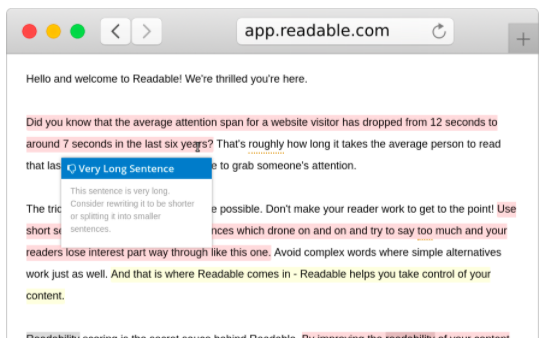
Grab Their Attention with a Captivating Headline
80 cents of your dollar should be spent on the headline.
This is what editor David Ogilvy said and it still holds true today. If your headline isn’t intriguing enough to encourage people to stay, it doesn’t matter how good your content is:
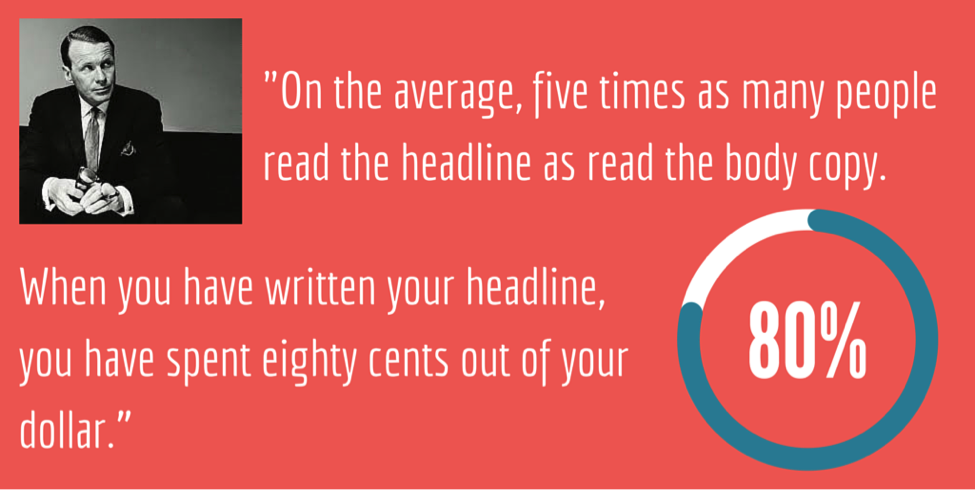
I cannot stress this point enough. Your headline is the first thing your visitors will see, and the only thing you’ll see if you don’t get it right, then you need to create a great first impression. This means that your blog, ad, or landing page title needs to be concise, attractive, and promise something great.
Remember that many variations may need to be written before you can get one that works. One of Ogilvy’s most famous headlines for Rolls Royce was written 104 times before he believed it to be appropriate:
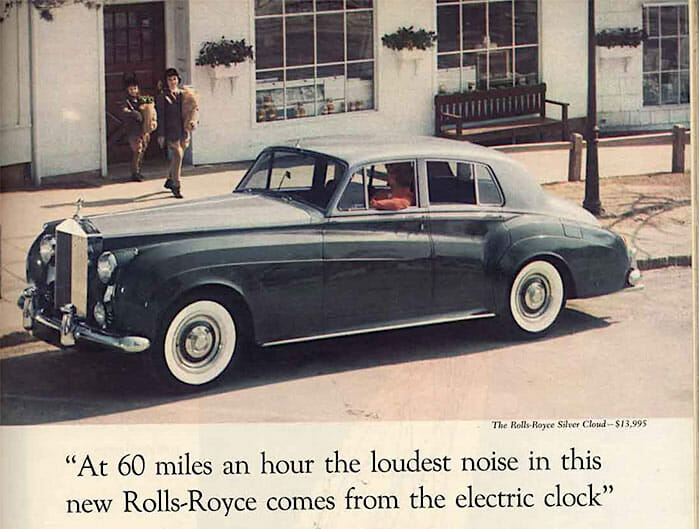
According to Copyblogger, “master copywriter” Gene Schwartz spent an entire week on the first 50 words of a sales page.
Post Reviews & Testimonials for Credibility
Testimonials and reviews are vital when it comes to gaining credibility in the eyes of your visitors, especially those who are visiting your site for the first time.
Understanding that social proof, the psychological phenomenon that makes a person believe that their behavior is “correct” based on the actions of the people around them, is critical to converting your potential customers.
91% of online consumers ages 18-34 trust both personal reviews and recommendations.
On the other hand, 94% of consumers say that negative reviews online caused them to avoid a deal.
So, make sure to use genuine reviews and only use trusted customer review sites as 60% of consumers search for reviews on Google.
For B2C companies, have reviews up on sites like:
For B2B companies, have reviews up on sites like:
Now that we have established their value, how are you going to get customer reviews and testimonials?
If you run a service-based business and have a working relationship with your clients, it is very easy to get testimonials from satisfied clients. The account manager can simply contact and ask.
But let’s say you don’t have any clients/customers. How do you get testimonials to get your first sales?
First of all, you may want to turn to influencer marketing:
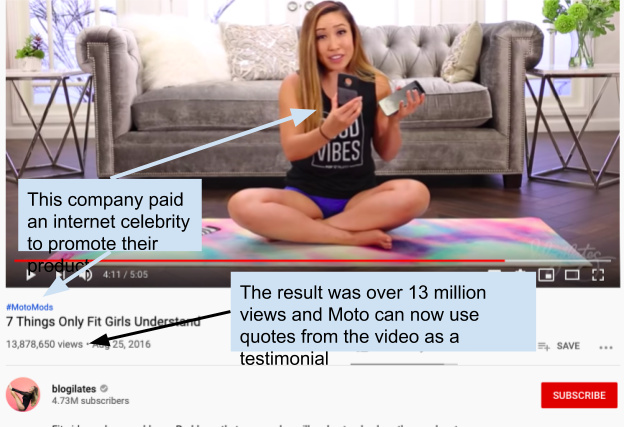
If you don’t have the budget to pay an influencer, talk to friends and family and offer your product at a discount in exchange for an evaluation.
If you already have customers, you can also offer incentives, such as prizes, to those who leave comments. Also, offer incentives for people to leave photos with their comments. A product review like this will dramatically increase your conversion rate:
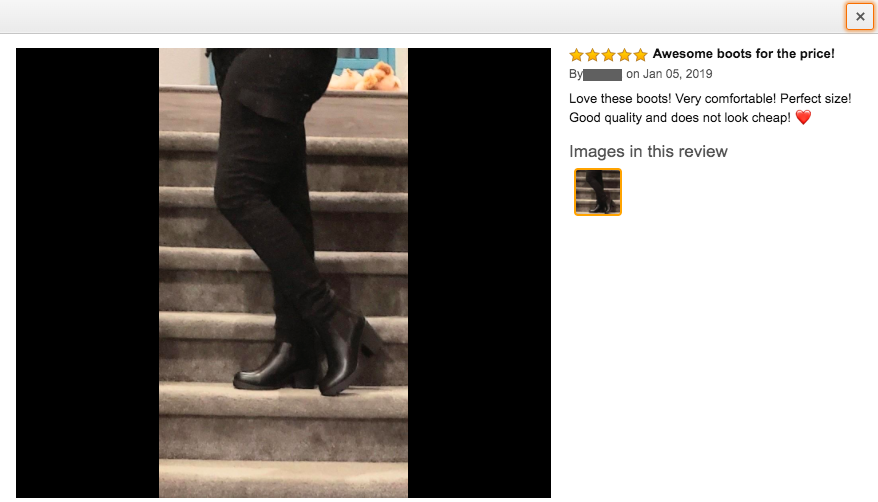
If you are a service-based business and don’t have testimonials yet, consider working for free in exchange for an honest testimonial.
Add Trust Badges on Your Website
Another important element in getting people to buy from you is adding trust items to your site. Some reliable signals you need are:
- Contact information (e.g. contact page, email, phone number, live chat)
- Social profiles (for example, Facebook, LinkedIn, Twitter, Instagram)
- Payment guarantees (for example, various payment methods, trust flags, certifications, SSL)
What is a trust badge? Something you probably see every day:
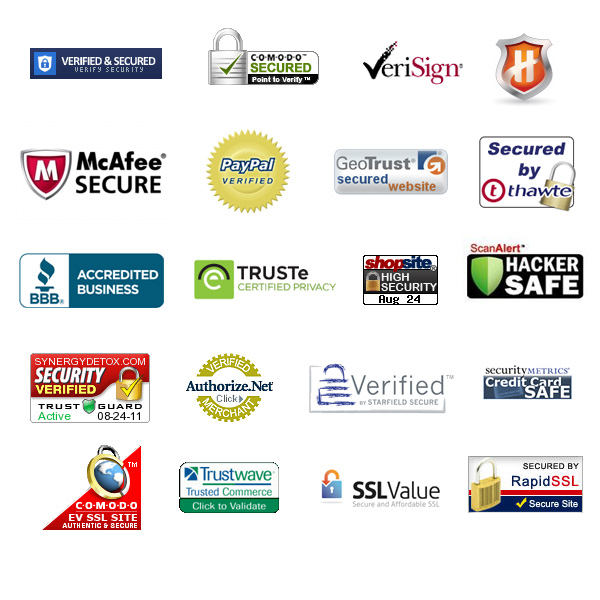
In addition to helping improve your website’s conversion rate, these trust signals also help with your SEO. Google only wants to show you sites that you trust, so doing these things is a double win:

You can also create your blog and share your organization’s experience. An up-to-date blog is a sign that your website is live, and an active website is a sign that your business can be trusted to do a good job. If you haven’t blogged since 2014, people won’t trust you.
If you have an ecommerce store, consider adding trust badges as well. Positioning them strategically for their CTAs will also help increase conversions:
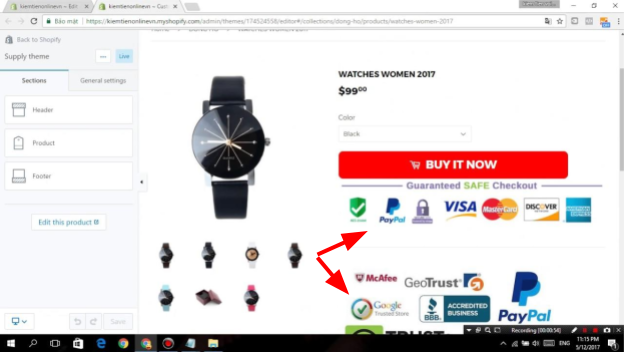
Be Transparent About Your Products & Services
Today’s consumers are very smart, so you need to be transparent and straightforward. Here are some things you can do to optimize the presentation of your product or service.
Avoid using absolute words. Here are some examples of absolutes:
- The best
- The only
- Perfect
- Impossible
In this example of brands selling chocolate chip cookies, do you see those headlines getting canceled?
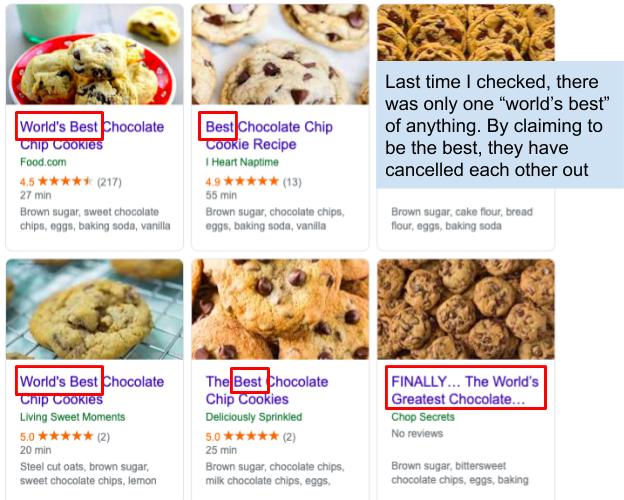
As a consumer, you probably think that ALL of them brag unnecessarily. The only exception to this is if he actually won an award or if he has some other evidence to claim he is No. 1 or “best of 2019”. In that case, be sure to include this award in your copy.
When you started your business, what was the pain point that you felt was not being addressed? Say it in simple terms, instead of making outrageous claims.
Also, list the benefits of your product. Instead of just declaring a feature (the “what”), explain why it will help the consumer:
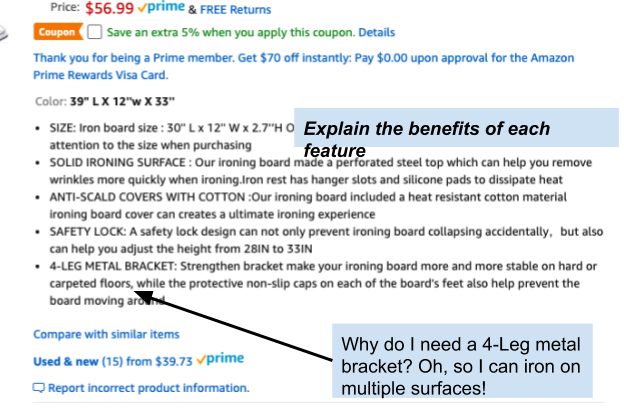
Do not write anything that is too complicated, as this will affect its transparency (or it will just be boring to read). Also create a simple layout and layout, like this “Who This Is For” page on ClickFlow:
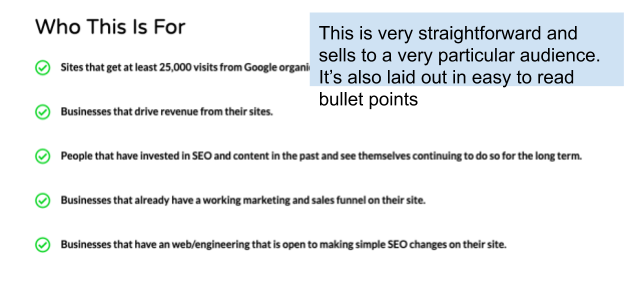
Take advantage of bookmarks, lists, and charts. Avoid any text that is a paragraph with more than three lines.
Create CTAs that Actually Cause Action
Simply put, your call to action should be the magnet that attracts your visitors.
When creating your call-to-action buttons, split testing (or A / B test) items, such as button placement, color, and copy, is the key to figuring out what works best:
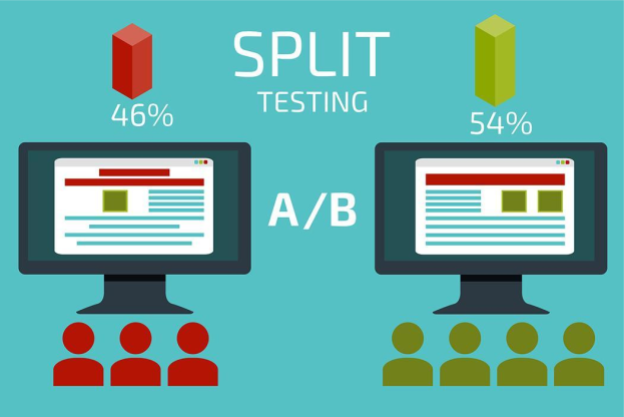
You may find that including a CTA on one side of the site works better than the other. And while the location of the button can affect your conversion rate to some extent, your actual bid will have a greater impact.
Consider the length of your buying cycle. If you are offering an online course, you may just want to receive the email and warm it up so that you can then introduce them to a $ 2,000 product.
Ramit Sethi does this with all of his courses. There is no option to purchase a course on his website; everything is done by email, so your CTA is a questionnaire that will give him your email address:
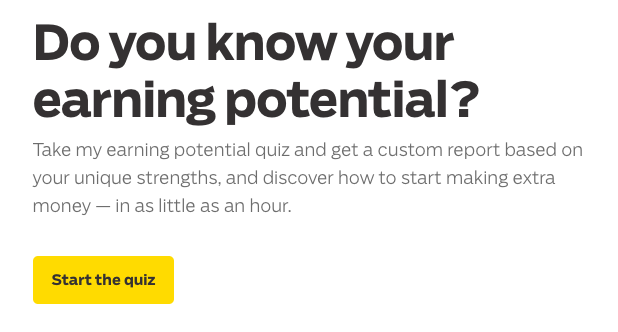
If you have a software solution for which people need an immediate fix, you can ask them to test your demo, as in this example with LumApps:
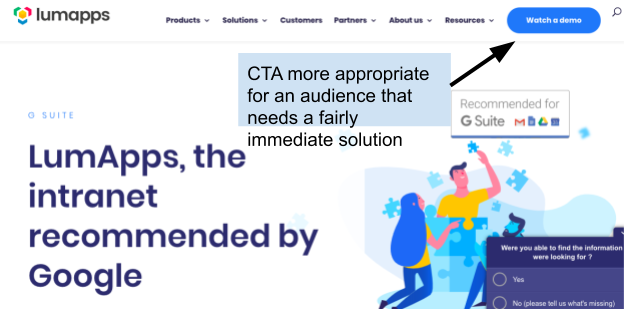
An appropriate CTA for an e-commerce site would be an immediate purchase request, ie “Add to bag”, “Add to cart”, etc.

Also, it is important to think about the words you use for your CTA.
For example, you can use a strong verb to describe the action they need to take (eg “Download now!”) Or make it more results-oriented (eg “Show me how to increase my conversion rate”).
Always use the active voice instead of the passive voice. SmartBlogger has a list of seven powerful word types that really affect your market’s emotions and make them click:
- Fear Power Words
- Encouragement Power Words
- Lust Power Words
- Anger Power Words
- Greed Power Words
- Safety Power Words
- Forbidden Power Words
Final Thoughts
Think of all the money you spend on lead generation. But how do you handle these calls after capturing those precious few? Doesn’t it make sense to put as much effort, if not more, into nurturing the people who cut the noise to talk to you?
So which tactic will you use first? Will you improve your email campaigns or establish more credibility with our professional advice?
